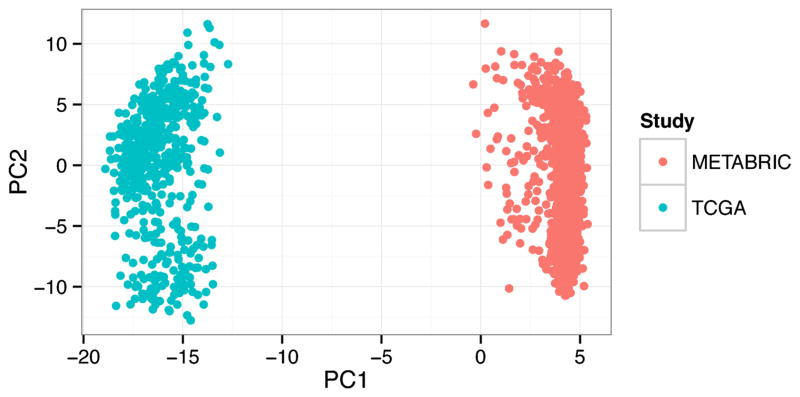Fig. 2.
Unsupervised analyses discover the predominant signals in the data. For example, principle component analysis applied to a dataset combined from two large studies of breast cancer identifies the study (METABRIC or TCGA) as the most important principle component (PC1). Such confounding factors have thus far made applying unsupervised analysis methods to broad compendia challenging, so this class of methods is most frequently used within large homogenous datasets.

